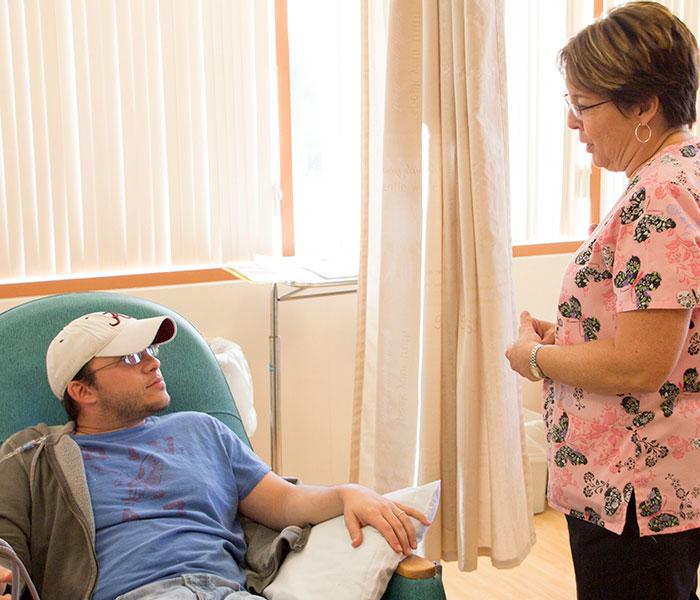Many young adults are just coming into their own through their teenage years and into their 20s. They’re attending college or entering the workforce, they’re beginning to form serious relationships, and they’re often coming to terms with what it means to be an adult. Unfortunately, this age group is not immune to cancer diagnoses. In fact, according to the National Cancer Institute (NCI), more than 70,000 adolescent and young adult (AYA) cancer diagnoses happen each year.
The AYA age group generally ranges from 15–39 years old. This group of patients has its own set of unique needs and characteristics that differ greatly from older adults and pediatric patients with cancer.
“The developmental milestones for this age group are unique: identity formation, separation from parents, choosing career pathways, forming sexual and intimate relationships, deciding on when—and if—to have children, increasing independence, and the responsibility of having a partner and children,” Anne Katz, RN, PhD, whose recent book This Should Not Be Happening: Young Adults With Cancer focuses closely on AYA issues.
AYAs face a unique challenge when it comes to treatment and care. All too often, they are either placed into pediatric oncology units with children much younger than them or on floors with older adult patients. Katz cautions, “These are not large children or small adults. This age group has unique developmental milestones that need to occur and that are interrupted due to cancer and prolonged treatment regimens.”
However, there are noticeable obstacles with such a broad age range of patients. “A 19-year-old has different issues from a 33-year-old. The former is probably in college and still somewhat reliant on his or her parents. The 33-year-old usually has an established career and will likely have found his or her life partner. They have big differences in needs for education and support from nurses,” Katz noted.
Although advances in cancer treatment have borne benefits to the AYA community, it’s still a largely under-recognized group of patients. With President Obama’s National Cancer Moonshot Initiative announced at the 2016 State of the Union address, Katz says she is hopeful that more research will focus on AYA cancers, which typically include leukemia, lymphoma, testicular cancer, thyroid cancer, breast cancer, and melanoma.
Limited access to clinical trials is another issue AYA patients face. According to the NCI, AYA patients are less likely to participate in clinical trials, often because of complications with insurance providers, a lack of access to specialized trials, or clinicians aren’t aware of trials that include AYAs. Clinical trial access has become one of the main focal points of the National Cancer Moonshot, and increased AYA participation could stand to accelerate advances in treatment for this age group.
Ultimately, AYA patients require specialized treatment plans that take their stage of life into factor. As the nation proceeds with its Cancer Moonshot Initiative, it’s important to account for all age groups when discussing the future of cancer care.






